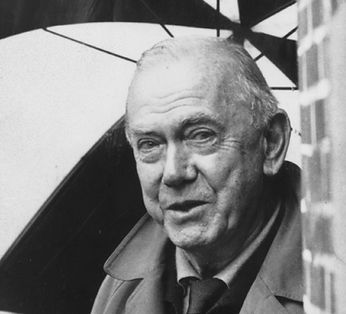

Monsignor Quixote
by Graham Greene
Reading club session: Mon. 14 March 2016
Published in 1982, this book is a pastiche of the classic Spanish novel Don Quixote by Miguel de Cervantes with many moments of comedy, but it also offers reflection on matters such as life after a dictatorship, Communism, and the Catholic faith.
The Author
Henry Graham Greene 1904-1991was an English novelist and author regarded by some as one of the great writers of the 20th century. Combining literary acclaim with widespread popularity, Greene acquired a reputation early in his lifetime as a major writer, both of serious Catholic novels, and of thrillers. He was shortlisted, in 1967, for the Nobel Prize for Literature.Through 67 years of writings, which included over 25 novels, he explored the ambivalent moral and political issues of the modern world, often through a Catholic perspective.
Although Greene objected strongly to being described as a Roman Catholic novelist, rather than as a novelist who happened to be Catholic, Catholic religious themes are at the root of much of his writing, especially the four major Catholic novels: Brighton Rock,The Power and the Glory, The Heart of the Matter, and The End of the Affair; which are regarded as "the gold standard" of the Catholic novel. Several works, such as The Confidential Agent, The Third Man, The Quiet American, Our Man in Havana, and The Human Factor, also show Greene's avid interest in the workings and intrigues of international politics and espionage.
Greene was born in Berkhamsted in Hertfordshire into a large, influential family that included the owners of the Greene King Brewery. He later boarded at Berkhamsted School in Hertfordshire, where his father taught and became headmaster. Unhappy at the school, he attempted suicide several times. He went up to Balliol College, Oxford to study history. After graduating, Greene worked first as a private tutor and then as a journalist. He converted to Catholicism in 1926 after meeting his future wife, Vivien Dayrell-Browning. However, later in life took to calling himself a "Catholic agnostic", or even at times a "Catholic atheist". He published his first novel, The Man Within, in 1929; its favourable reception enabled him to work full-time as a novelist. He supplemented his novelist's income with freelance journalism, and book and film reviews.
Greene suffered from bipolar disorder, which had a profound effect on his writing and personal life. William Golding described Greene as "the ultimate chronicler of twentieth-century man's consciousness and anxiety." He died in 1991, at age 86, of leukaemia, and was buried in Corseaux cemetery.
Extras on Greene:
TV ad for Monsignor Quixote
Documentary on Greene's life and literary output
Graham Greene obituary 1991